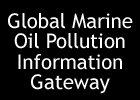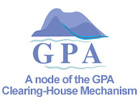|
CONTINGENCY PLANS
As
summarized by Environment Canada, a contingency
plan "is a plan for action prepared in anticipation of
an oil spill. Contingency plans are essential because they
establish practical plans of action for all types of oil spills
so that, when spills do occur, a quick response can minimize
the damage. The first step in developing a plan is to learn
as much about the area as possible. Regardless of the geography
or the size of an area, contingency plans normally include:
- identification
of authority and a chain of command;
- a
list of persons and organizations that must be immediately
informed of a spill;
- an
inventory of available trained spill personnel and spill
response equipment;
- a
list of jobs that must be done (in order of priority);
- a
communication network to coordinate response;
- probable
oil movement patterns under different weather conditions;
and
- sensitivity
maps and other technical data.
Planners
need to know about:
- important
or sensitive physical and biological resources within or
near the area, such as marshes, unusual flora (plant life)
and wildlife resources such as fish, shellfish, marine mammals
and birds;
- important
habitat areas required by particular species for spawning,
feeding or migration;
- tides,
currents and local climatic conditions, such as wind and
severe weather patterns;
- shoreline
characteristics; and
- proximity
to roads, airports, trained response personnel, oil spill
clean-up equipment, etc."
RESPONSE
TECHNIQUES
 "Given the difficulties of cleaning up oil at sea, many
oil spills result in contamination of shorelines. The oil
which reaches the coast generally has the greatest environmental
and economic impact. It also determines to a large extent
the political and public perception of the scale of the incident,
as well as the costs. It is important to start removing oil
promptly from contaminated shorelines because as time passes
and the oil weathers, it will stick more and more firmly to
rocks and sea walls, and may become mixed with or buried in
sediments. Shoreline clean-up is usually straightforward,
however, and does not normally require specialised equipment.
Reliance is frequently placed on locally-available equipment
and manpower, rather than specialised equipment. Good organisation
and management are the key to effective clean-up. Poorly thought
out and uncoordinated clean-up efforts usually result in inefficient
use of resources and excessive quantities of waste for disposal."
(ITOPF)
"Given the difficulties of cleaning up oil at sea, many
oil spills result in contamination of shorelines. The oil
which reaches the coast generally has the greatest environmental
and economic impact. It also determines to a large extent
the political and public perception of the scale of the incident,
as well as the costs. It is important to start removing oil
promptly from contaminated shorelines because as time passes
and the oil weathers, it will stick more and more firmly to
rocks and sea walls, and may become mixed with or buried in
sediments. Shoreline clean-up is usually straightforward,
however, and does not normally require specialised equipment.
Reliance is frequently placed on locally-available equipment
and manpower, rather than specialised equipment. Good organisation
and management are the key to effective clean-up. Poorly thought
out and uncoordinated clean-up efforts usually result in inefficient
use of resources and excessive quantities of waste for disposal."
(ITOPF)
 Shoreline clean-up methods include
(see, e.g., U.S. EPA, NOAA
+ NOAA and USCG, ITOPF,
and Environment Canada):
Shoreline clean-up methods include
(see, e.g., U.S. EPA, NOAA
+ NOAA and USCG, ITOPF,
and Environment Canada):
 Possible shoreline clean-up methods also include the following
methods (however, in many countries these methods may only
be used after special permission from the authorities):
Possible shoreline clean-up methods also include the following
methods (however, in many countries these methods may only
be used after special permission from the authorities):
-
the use of solidifiers (gelling agents),
- shoreline
cleaning agents,
- fertilizers
to enhance biological remediation, and
- in
situ burning.
 The environmentally acceptable disposal of oil and oily waste
(debris) is important. As pointed out by EPA: "Cleanup
from an oil spill is not considered complete until all waste
materials are disposed of properly. The cleanup of an oiled
shoreline can create different types of waste materials, including
liquid oil, oil mixed with sand, and tar balls. Oil can sometimes
be recovered and reused, disposed of by incineration, or placed
in landfills". All these methods must be employed with
high consideration for the environment in order to avoid new
problems of air pollution or leakage of toxic substances into
groundwater and rivers.
The environmentally acceptable disposal of oil and oily waste
(debris) is important. As pointed out by EPA: "Cleanup
from an oil spill is not considered complete until all waste
materials are disposed of properly. The cleanup of an oiled
shoreline can create different types of waste materials, including
liquid oil, oil mixed with sand, and tar balls. Oil can sometimes
be recovered and reused, disposed of by incineration, or placed
in landfills". All these methods must be employed with
high consideration for the environment in order to avoid new
problems of air pollution or leakage of toxic substances into
groundwater and rivers.
 See also some lessons learned, "findings that have already
changed the way we think about cleaning up oil spills"
(NOAA).
See also some lessons learned, "findings that have already
changed the way we think about cleaning up oil spills"
(NOAA).
 Sensitivity
of coastal environments to oil:
Location (where the oil is stranded) and shoreline geology,
as well as type of oil that needs to be taken care of, and
of course the type and sensitivity of the biological communities
(species and habitats) that are likely to be affected by the
clean-up operation, are important factors in the choice of
clean-up method(s) — see NOAA
and EPA. The
U.S. Coastguard have listed shoreline
types, from the least (low figures) to the most sensitive
ones to oil pollution:
Sensitivity
of coastal environments to oil:
Location (where the oil is stranded) and shoreline geology,
as well as type of oil that needs to be taken care of, and
of course the type and sensitivity of the biological communities
(species and habitats) that are likely to be affected by the
clean-up operation, are important factors in the choice of
clean-up method(s) — see NOAA
and EPA. The
U.S. Coastguard have listed shoreline
types, from the least (low figures) to the most sensitive
ones to oil pollution:
- Exposed
rocky cliffs and seawalls
- Wave
cut rocky platforms
- Fine
to medium-grained sand beaches
- Coarse-grained
sand beaches
- Mixed
sand and gravel beaches
- Gravel
beaches/Riprap
- Exposed
tidal flats
- Sheltered
rocky shores/man-made structures
- Sheltered
tidal flats
- Marshes
 It should be noted that other shore types and shallow underwater
habitats are also very sensitive to oil pollution, including:
It should be noted that other shore types and shallow underwater
habitats are also very sensitive to oil pollution, including:
- Mangroves
(And according to ITOPF: "Leaving residual oil to weather
and degrade naturally is usually recommended for sensitive
shoreline types such as salt marshes and mangroves, because
they have been shown to be more easily damaged by the physical
disturbance caused by clean-up teams and vehicles than by
the oil itself. If any cleaning is attempted, it should
be carried out with specialist guidance and advice.")
- Coral
reefs See also NOAA.
|


